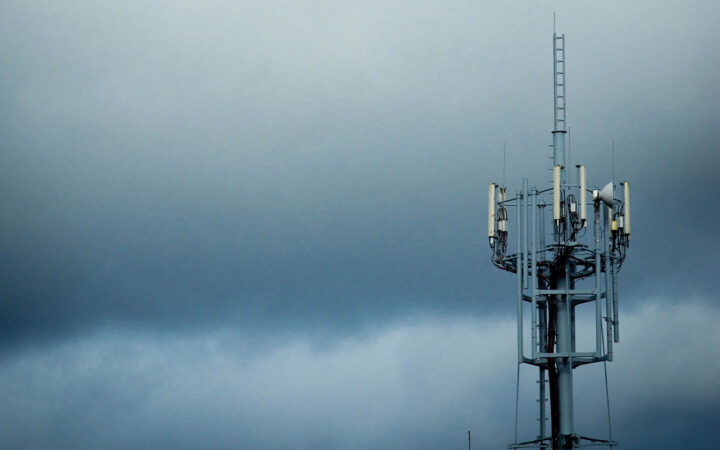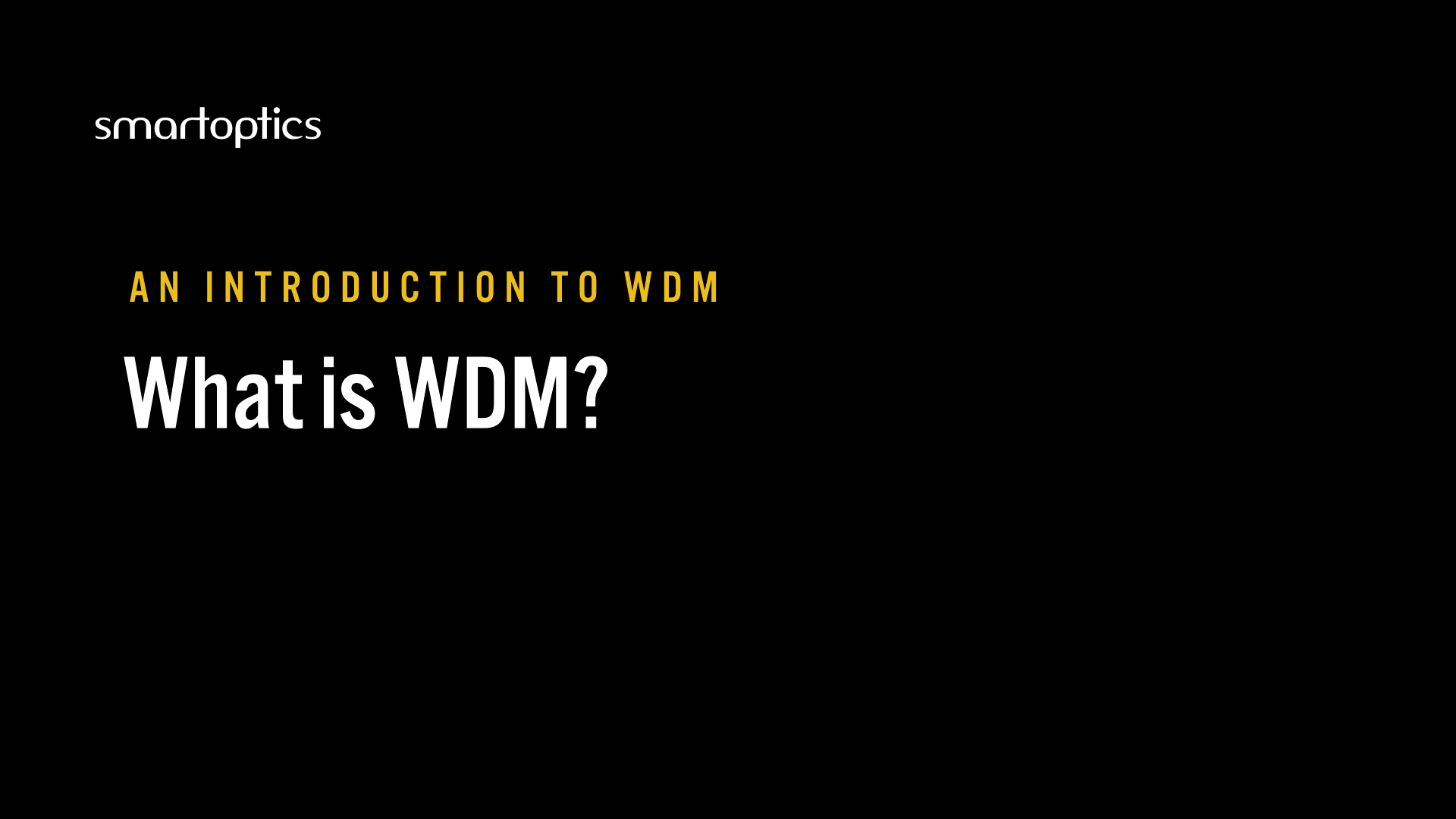WHAT IS WDM? – THE BASICS OF WAVELENGTH DIVISION MULTIPLEXING
Wavelength division multiplexing, WDM, is a technology that increases bandwidth by allowing different data streams at different frequencies to be sent simultaneously over a single optical fiber network. In this way, WDM maximizes the usefulness of fiber and helps optimize network investments.
WDM has long been the technology of choice for carriers and service providers, for transporting large amounts of data between sites. Large-scale systems, designed for “national infrastructures” traditionally made the systems prohibitively expensive and too complex for private network use. In recent years, things have changed. And the technology is evolving rapidly.
Today, WDM networking solutions are available that meet the needs of corporate enterprises, governmental organizations, and privately owned datacenters. Solutions that are simpler and more cost effective than the traditional carrier grade ones.
The Meaning of WDM
WDM stands for Wavelength Division Multiplexing. At its core, WDM is a method for combining multiple data signals onto a single optical fiber by assigning each data stream a distinct light wavelength (i.e. “color”). In other words, instead of sending one data channel per fiber, WDM lets you send many channels in parallel—each riding on its own wavelength—over the same fiber.
Key points in brief:
- Each wavelength acts as an independent “lane,” carrying its own data stream without interfering with others.
- Because the wavelengths are distinct, you don’t need separate fibers for each channel—this multiplies the capacity of each fiber link.
- At the receiving end, a demultiplexer separates the wavelengths back into individual data streams.
- WDM is protocol- and data-rate agnostic, meaning you can carry a mix of services (e.g. IP, storage, voice, video) on the same fiber.
In summary: WDM enables efficient, scalable, and flexible use of optical fibers by leveraging multiple light wavelengths to transmit multiple data streams simultaneously.
WDM optimizes the use of optical fiber
The foundation of WDM lies in the ability to send different data types over fiber networks in the form of light. Using a fiber optic cable as a “single lane road” is wasteful. Instead, by allowing different light channels, each with a unique wavelength, to be sent simultaneously over an optical fiber network as a multi-lane highway, a single virtual fiber network is created. Signals at WDM wavelengths are independent from each other.
This eliminates the need for individual fibers for each and every service, as a single fiber can be shared for up to 80 services at once.
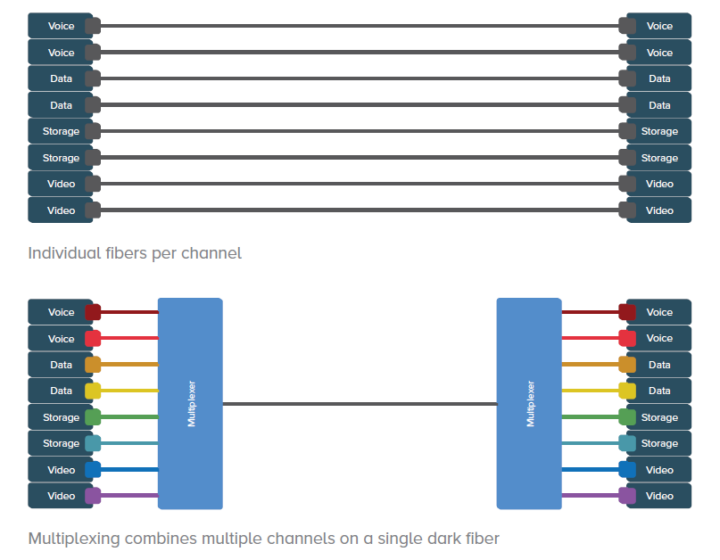
Wavelength distance multiplexer illustration
In this way WDM increases the bandwidth and maximizes the usefulness of fiber, expanding capacity without building new infrastructure. Fiber rental or purchase represents a significant share of networking costs so using an existing fiber to transport multiple traffic channels can generate substantial savings.
In its simplest form WDM systems consist of four elements:
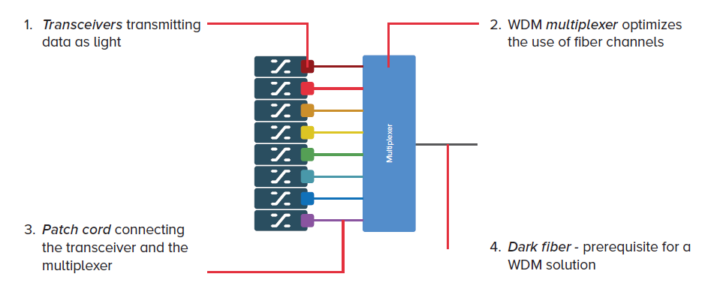
Transceivers – transmitting data as light
Transceivers are wavelength-specific lasers that convert data signals from SAN and IP switches to optical signals that can be transmitted into the fiber. Each data stream is converted into a signal with a light wavelength that is a unique color. Due to the physical properties of light, channels cannot interfere with each other. All WDM wavelengths are therefore independent. Creating virtual fiber channels in this way means that the number of fibers required are reduced by the factor of the wavelengths used. It also allows new channels to be connected as needed, without disrupting the existing traffic services.
Since each channel is transparent to the speed and type of data, any mix of SAN, WAN, voice and video services can be transported simultaneously over a single fiber or fiberpair.
Multiplexers optimizing the use of fiber channels
The WDM multiplexer, sometimes referred to as the passive mux, is the key to optimizing, or maximizing, the use of the fiber. The multiplexer is at the heart of the operation, gathering all the data streams together to be transported simultaneously over a single fiber. At the other end of the fiber the streams are demultiplexed, i.e. separated into different channels again.
Early WDM systems were able to transport two bi-directional channels over a pair of fibers. The technology has evolved rapidly and both the number of channels and the amount of data per channel transported has increased. Today up to 80 channels can be simultaneously transmitted down a fiber at any one time.
Since they’re usually positioned at the end points in a network, multiplexers are often referred to as terminal muxes. When connecting two sites, a multiplexer is positioned at each site, creating a point-to-point connection. In many cases, networks have additional sites where connectivity is required of some form, but not for all types of traffic. Here optical add drop multiplexers (OADMs) are used to extract the desired wavelengths needed for the specific site while bypassing the traffic types not needed. In this way, more versatile ring, distribution and access networks can be built.
Patch cord connecting the transceiver and the mux
The transceiver transmits the high-speed data protocols on narrow band wavelengths while the multiplexer is at the heart of the operation. The patch cable is the glue that joins these two key elements together. LC connector cords are popular and connect the output of the transceiver to the input on the multiplexer.
Dark fiber: Fiber pair or single fiber strand
A re-requisite for any WDM solution is access to a dark fiber network. The most common way of transporting optical traffic over an architecture is by using a fiber pair. One of the fibers is used for transmitting the data and the other is used for receiving the data. This allows the maximum amount of traffic to be transported.
At times only a single fiber is available. Because different light colors travel on different wavelengths, a WDM system can be built regardless. One wavelength is used to send data and a second one to receive it.
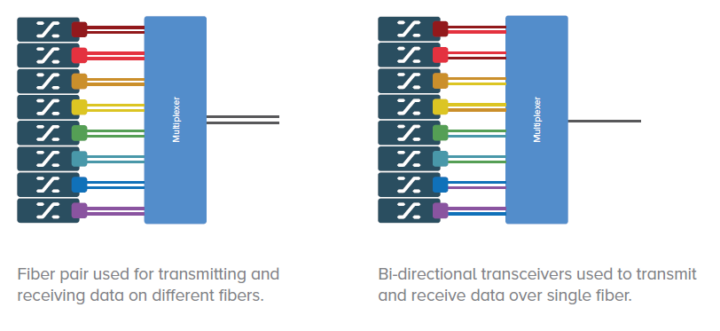
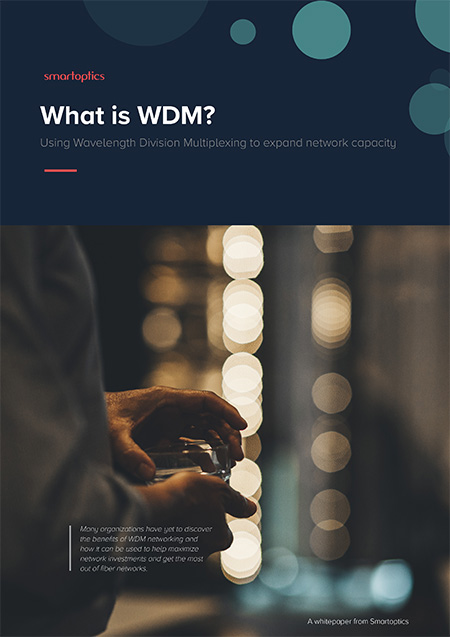

Related articles

What is a SAN ( Storage Area Network) and how does it protect mission-critical workloads?

What is Fibre Channel used for?
